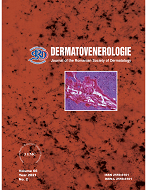Summary
Chronic lower limb ulcers are defined by a longstanding evolution, with no tendency to heal after three months of proper treatment or still not completely healed after twelve months. Chronic wounds may be classified as typical and atypical. The majority of the typical chronic ulcers are localized on the lower limbs and are caused by chronic venous insufficiency, followed in frequency by other wound types: arterial, of mixed etiology- arterial and venous, pressure, neuropathic and diabetic foot ulcers. Standard therapy of chronic ulcers begins with a few general principles which are applicable regardless of the lesions’ cause: tissue debridement, control of the infection, moisture balance and management of the edges of the wound. Negative pressure wound therapy is an alternative method shown to be effective in the treatment of wounds of various etiologies. The appropriate negative pressure therapy type is chosen according to the clinical situation of the patient, the characteristics of the wound and the objective of the treatment. We aim to review the applications of negative pressure wound therapy in the management of typical chronic lower limb ulcers, its impact on skin healing, its adverse reactions, as well as to provide information from our experience with this device.


